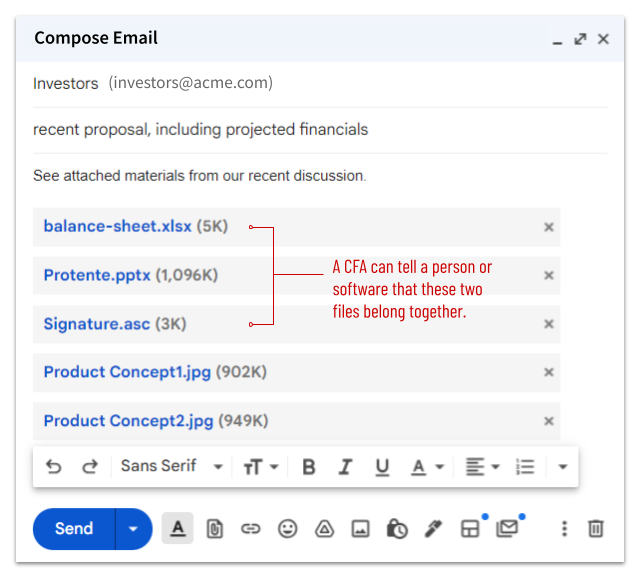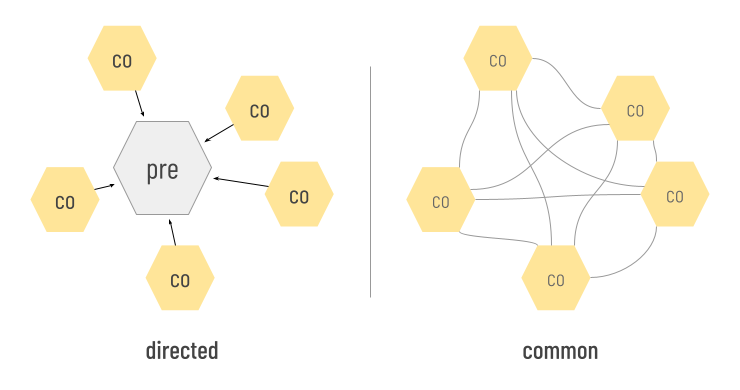Cross-File Associations
binding files to one another without containers
Concepts
The theory behind CFAs is described in an academic paper. There’s also a Dev Guide. We’ll skip most of the details in this tutorial, but we still need to define a few terms.
Example
Consider an email that includes as attachments a slide deck, photos, a spreadsheet, and a digital signature. A CFA can make it obvious that the digital signature is bound to the spreadsheet. Noticing the CFA, email clients can encourage uploading or downloading the two associated files as a unit, and warn if they become separated.

Building blocks
In the context of CFAs, a file is anything that has a name/identifier and content — the familiar artifact in a file system, but also a web page, a tweet, a piece of data, etc. A container is anything that holds files: a folder, an email, a database, an S3 bucket, and so forth. These two object categories are not mutually exclusive; files can be containers (e.g., zip files), and containers can be thought of as files (e.g., emails saved as .eml).
When a file participates in a cross-file association, we say that the file binds the CFA. A given file may bind zero or more CFAs.
pre and co
Some CFAs impute special status to a subset of its bound files that come before the others. We call these directed CFAs. The precedence of these files may or may not mean they are more valuable — importance and utility are contextual — but such files are almost always created first, and they provide a logical foundation toward which the group is oriented and upon which the meaning of the overall group depends. Such files are called pre files.
If the same audio recording is saved in both .flac and .mp3 format, the two files might be bound into a CFA that is directed toward the pre FLAC version (which is lossless), with the lossy MP3 as a co file.
A common CFA is not directed toward pre; it models a simple set in which all bound files are co files with one another.
A given file may have pre status in one CFA, and co status in another.

Sometimes, co files are created by different authors than the pre file they depend on. A student who writes an essay explicating a poem is creating a co file that depends on the poem as a pre file. This could happen long after the poet is dead, and without the poet’s active cooperation. Thus, co files may know more about pre files than vice versa.
External vs. internal strategies
There are various ways to declare a CFA. We call them strategies. Different strategies have different pros and cons.
When the strategy that binds a file to a CFA requires changes to the content of the file, we say that the strategy is internal, or that the file is internally bound to that CFA. When the binding convention manifests outside the content of the file, we say that the strategy is external, or that the file is externally bound. External and internal strategies are not mutually exclusive; a given file may use both to bind CFAs.